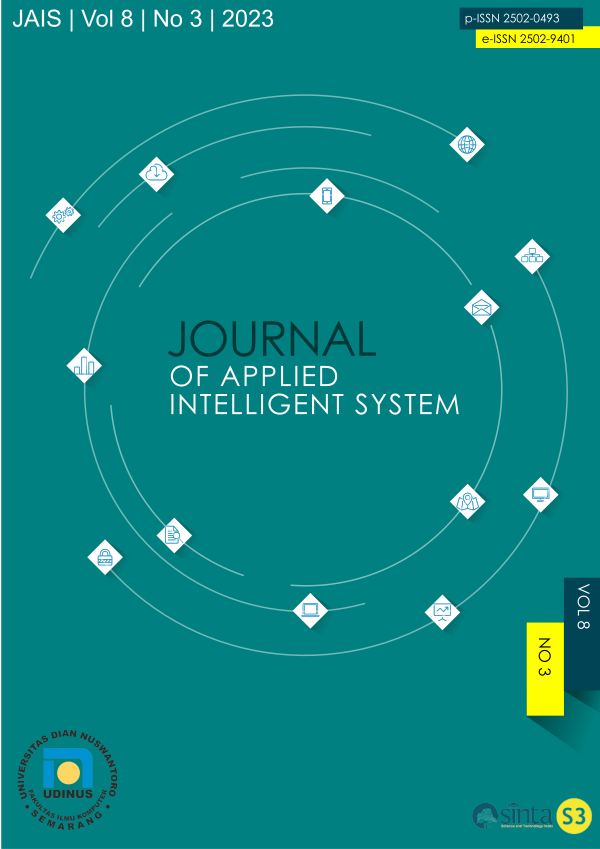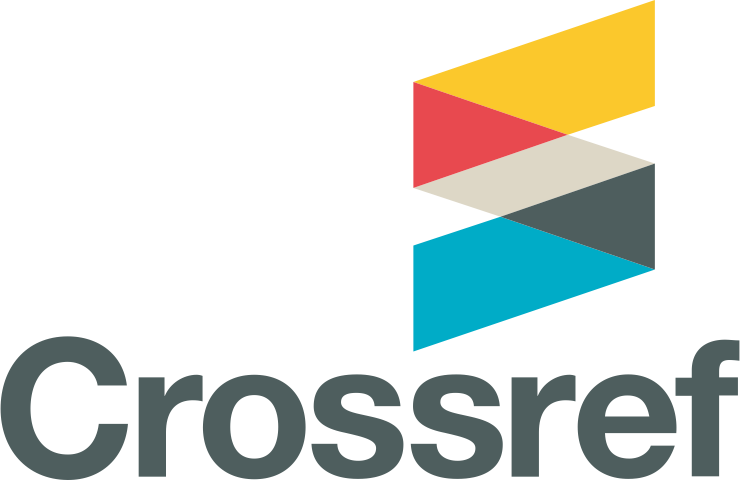Identification of Organic and Non-Organic Waste with Computer Image Recognition using Convolutionalneural Network with Efficient-Net-B0 Architecture
DOI:
https://doi.org/10.33633/jais.v8i3.9064Abstract
This study aims to develop a method for identifying organic and non-organic waste using a computer image recognition technique based on Convolutional Neural Network (CNN) with Efficient-Net-B0 architecture. Efficient and accurate waste identification is important in sustainable waste management. The primary goal of this research is to distinguish between organic and non-organic waste in images. Manually labeling waste images as organic or non-organic can be a time-consuming and error-prone task. Configuring and fine-tuning the EfficientNet-B0 architecture and CNN parameters for optimal performance can be a complex and iterative process. Hyperparameter tuning may be needed. Ensuring accurate labels is essential for training a reliable model. The choice of using the Convolutional Neural Network (CNN) with the EfficientNet-B0 architecture is a crucial part of the solution. EfficientNet-B0 is known for its balance between accuracy and computational efficiency. The use of CNNs and EfficientNet-B0 for this task indicates the system's ability to discern visual differences between the two waste types. The method proposed in this study utilizes CNN's ability to study important features of waste images to recognize various types of waste. This research includes the waste data collection stage which includes organic and non-organic waste in the form of 2D images. To evaluate the performance of the proposed method, a test was carried out using a waste dataset taken from a predetermined environment. The test results show that the proposed method is able to identify organic and non-organic waste with a high degree of accuracy. In test scenarios, this method achieves an accuracy of 98%, which demonstrates its ability to effectively identify the type of waste. Through the use of CNN-based computer image recognition techniques with the Efficient-Net-B0 architecture, this research succeeded in solving the problem of identifying organic and non-organic waste automatically and accurately. The proposed method has the potential to be applied in more efficient waste management systems, helps minimize human identification errors, and makes a positive contribution to environmental protection efforts. This research is expected to be the basis for further development in the introduction and management of waste in a sustainable manner.References
JennaR. Jambeck , Roland Geyer, Chris Wilcox, Theodore R. Siegler, Miriam Perryman, Anthony Andrady, Ramani Narayan, And Kara Lavender Law, “Plastic Waste Inputs From Land Into The Ocean”, SCIENCE 13 Feb 2015 Vol 347, Issue 6223 pp. 768-771.
P. P. Sari, E. Lafiani, S. Sholikhah, and N. Ngazizah, “JPDK : Volume 4 Nomor 1 Tahun 2022 Research & Learning in Primary Education Pendidikan Lingkungan Melalui Program Bank Sampah Sejahtera Sebagai Kepedulian Terhadap Lingkungan,” vol. 4, pp. 35–40, 2022.
A. Ibnul Rasidi, Y. A. H. Pasaribu, A. Ziqri, and F. D. Adhinata, “Klasifikasi Sampah Organik dan Non-Organik Menggunakan Convolutional Neural Network,” J. Tek. Inform. dan Sist. Inf., vol. 8, no. 1, pp. 142–149, 2022, doi: 10.28932/jutisi.v8i1.4314.
H. N. William, Mulim, Revikasha Farrel Muhammad, Rivandi, “No TitleWaste Classification Using EfficientNet-B0,” IEEE, 2021, doi: https://doi.org/10.1109/ICCSAI53272.2021.9609756.
R. and N. H. W. Mulim, M. F. Revikasha, “Waste Classification Using EfficientNet-B0,” 2021 1st Int. Conf. Comput. Sci. Artif. Intell., vol. 10, no. Taiwan 2nd International Conference on Computing, Analytics and Networks (Indo-Taiwan ICAN), p. 7, 2021.
S. H. Sunny, “Design of a Convolutional Neural Network Based Smart Waste Disposal System,” no. May, 2019, doi: 10.1109/ICASERT.2019.8934633.
D. C. Prasetya P. Elvan, “Rainfall Forecasting for the Natural Disasters Preparation Using Recurrent Neural Networks,” 2019, doi: http://dx.doi.org/10.1109/ICEEI47359.2019.8988838.
M. Sylwia, “Deep learning-based waste detection in natural and urban environments,” 2022, doi: https://doi.org/10.1016/j.wasman.2021.12.001.
W. Y. Lu Gang, “One-dimensional convolutional neural networks for acoustic waste sorting,” J. Clean. Prod. 271, 122393, 2020, doi: http://dx.doi.org/10.1016/j.jclepro.2020.122393.
F. O. Istad, “Detecting glass and metal in consumer trash bags during waste collection using convolutional neural networks,” 2021, [Online]. Available: https://www.sciencedirect.com/science/article/pii/S0956053X20305432?via%3Dihub
T. A. Melinte Octavial Daniel, “Deep Convolutional Neural Networks Object Detector for Real-Time Waste Identification,” 2020, doi: https://doi.org/10.3390/app10207301.
L. S. Gu yu, “A deep convolutional neural network to simultaneously localize and recognize waste types in images,” 2021, doi: https://doi.org/10.1016/j.wasman.2021.03.017.
M. Cristian, “Career Adapt-Abilities Scale–Short Form (CAAS-SF): Construction and Validation,” vol. 25, no. 2, 2015, doi: https://doi.org/10.1177/1069072714565856.
S. Ebta, “Definisi Sampah,” 2017, [Online]. Available: https://kbbi.web.id/sampah
Gilbert, “Sumber Timbuan Sampah,” 2020.
H. D. Djohan, Johanes Agustinus, Pengelolaan Limbah Rumah Sakit. Jakarta: Salemba Medika, 2013.
R. Munir, Pengolahan citra digital dengan pendekatan algoritmik. Bandung : Informatika, 2004.
K. Andri, Jaringan Syaraf Tiruan( Konsep Dasar, Algoritma dan Aplikasi). Yogyakarta: Gava Media, 2004.
S. S. Diyah, Puspitaningrum, “Pengantar jaringan saraf tiruan,” Yogyakarta : Andi, 2006.
S. Bukhori, “Implementasi Deep Learning Pada Sistem Klasfikasi Penyakit Paru Berdasarkan Foto Rontgen Munggunakan Metode Convolutional Neural Network (CNN),” 2019.
C. Hoeser, T., & Kuenzer, “Object Detection and Image Segmentation with Deep Learning on Earth Observation Data: A Review-Part I: Evolution and Recent Trends,” 2020, [Online]. Available: https://doi.org/10.3390/rs12101667
A. P. Indolia Sakshi, Gosmawi Kumar Anil, Mishra, “Conceptual Understanding of Convolutional Neural Network- A Deep Learning Approach,” vol. Volume 132, pp. 679–688, 2018, doi: 10.1016/j.procs.2018.05.069.
Y. Rikiya, “Convolutional neural networks: an overview and application in radiology,” 2018, [Online]. Available: https://insightsimaging.springeropen.com/articles/10.1007/s13244-018-0639-9
T. Z. Lee Chen-Yu, Gallagher Patrick W, “Generalizing Pooling Functions in Convolutional Neural Networks: Mixed, Gated, and Tree,” 2016, [Online]. Available: http://proceedings.mlr.press/v51/lee16a.pdf
C. S. Lee Ki Bum, “A convolutional neural network for fault classification and diagnosis in semiconductor manufacturing processes,” IEEE Trans. Semicond. Manuf., vol. 30, 2017, doi: https://doi.org/10.1109/TSM.2017.2676245.
R. A. T. Ahmed, Shamsaldin S., Fattah Polla, “The Study of The Convolutional Neural Networks Applications,” 2019, [Online]. Available: https://www.researchgate.net/publication/338206036_The_Study_of_The_Convolutional_Neural_Networks_Applications
S. A. S. F. Polla, “A Study of The Convolutional Neural Networks Applications,” 2019, doi: https://doi.org/10.25079/ukhjse.v3n2y2019.pp31-40.
S. E. G. Nuraini Ulfa Novia, Fitriyah Hurriyatul, “Perancangan Dan Impelementasi Sistem Klasifikasi Jenis Sampah Rumah Tangga Dengan Menggunakan Metode Naive Bayes”, [Online]. Available: http://repository.ub.ac.id/id/eprint/147525
T. Mingxing, “EfficientNet: Rethinking Model Scaling for Convolutional Neural Networks,” 2019, doi: https://doi.org/10.48550/arXiv.1905.11946.
S. Q. Jin Haefing, “Auto-Keras: An Efficient Neural Architecture Search System,” 2018, doi: https://doi.org/10.48550/arXiv.1806.10282.
Y. A. Lesnussa, C. G. Mustamu, F. Kondo Lembang, and M. W. Talakua, “Application of Backpropagation Neural Networks in Predicting Rainfall Data in Ambon City,” Int. J. Artif. Intell. Res., vol. 2, no. 2, 2018, doi: 10.29099/ijair.v2i2.59.
Downloads
Published
Issue
Section
License
Copyright (c) 2023 Heny Indriani Sutomo

This work is licensed under a Creative Commons Attribution-NonCommercial 4.0 International License.
- Authors retain copyright and grant the journal right of first publication with the work simultaneously licensed under a Creative Commons Attribution License that allows others to share the work with an acknowledgment of the work's authorship and initial publication in this journal.
- Authors are able to enter into separate, additional contractual arrangements for the non-exclusive distribution of the journal's published version of the work (e.g., post it to an institutional repository or publish it in a book), with an acknowledgment of its initial publication in this journal.
- Authors are permitted and encouraged to post their work online (e.g., in institutional repositories or on their website) prior to and during the submission process, as it can lead to productive exchanges, as well as earlier and greater citation of published work (See The Effect of Open Access).









